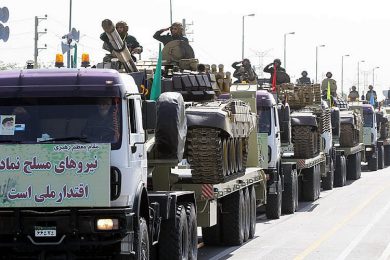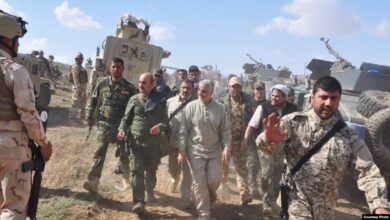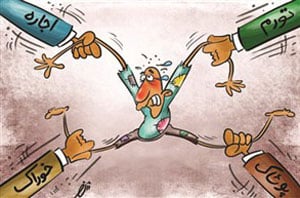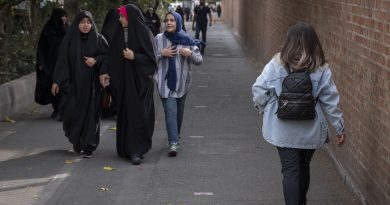The Islamic Revolutionary Guard Corps (IRGC) wields immense power in Iran, acting as a political, economic, and military force. While it claims to defend the Islamic Republic’s values, the IRGC has become synonymous with repression, silencing dissent, and targeting activists, journalists, and minorities. Despite the risks, ordinary Iranians continue to resist its grip, fighting for freedom, justice, and human rights. Their courage reflects a deep resilience and hope for a brighter future, even in the face of brutal crackdowns and systemic oppression.
This report highlights the voices of those resisting the IRGC’s repression, examining their experiences, challenges, and the broader implications of their struggle.
1. The IRGC’s Role in Repression
A. Tools of Repression
- Surveillance and Censorship:
. The IRGC monitors citizens’ activities, both online and offline, using advanced technologies to track dissenters.
. Internet blackouts and social media bans are commonly implemented during protests to prevent communication and documentation.
2. Violent Crackdowns:
. Protests are met with force, including the use of live ammunition, tear gas, and mass arrests.
. The IRGC’s paramilitary arm, the Basij militia, plays a key role in suppressing demonstrations.
3. Arrests and Torture:
. Activists, journalists, and students are routinely arrested and detained in IRGC-controlled facilities, where reports of torture and inhumane treatment are widespread.
4. Propaganda and Intimidation:
. The IRGC employs state media to discredit protesters, labeling them as “foreign agents” or “terrorists.”
2. Stories of Resistance
A. Women Leading the Fight
. Case Study: The “Women, Life, Freedom” Movement
. The death of Mahsa Amini in September 2022, after her arrest by Iran’s morality police, sparked nationwide protests.
. Women burned their hijabs, cut their hair in defiance, and led demonstrations, challenging both the regime and the IRGC’s enforcers.
. Reza, a protester from Tehran, stated: “The women are our leaders. Their courage gives us hope.”
B. Student Activists
. Case Study: University Protests
. Universities across Iran have become hotbeds of resistance, with students organizing sit-ins and demonstrations.
. Sara, a 22-year-old student, described the IRGC’s violent response: “They stormed our dormitories at night, arresting anyone they could find. But we won’t stop.”
C. Ethnic and Religious Minorities
. Kurdish Activists:
. Kurdish regions in Iran have witnessed fierce resistance against the IRGC’s oppression, despite facing disproportionate violence.
. Omid, a Kurdish activist, stated: “For us, resistance is survival. The IRGC has tried to erase our identity, but we won’t let them.”
. Baháʼís and Other Minorities
. Baháʼí communities face systematic discrimination and arrests, often led by IRGC forces.
. A Baháʼí community leader shared: “They target us because we represent unity and peace. But their repression only strengthens our resolve.”
D. Iranian Diaspora
. Exiled Iranians have played a critical role in amplifying resistance voices, organizing rallies, and lobbying for international action.
. Nasim, an activist based in Germany, remarked: “We may be far from home, but our hearts are with those who resist. We are their voice abroad.”
3. The IRGC’s Response to Resistance
A. Escalation of Violence
. The IRGC frequently escalates its use of violence during protests, leading to mass casualties, particularly in marginalized regions.
. The November 2019 protests, sparked by fuel price hikes, saw over 1,500 people killed by security forces.
B. Targeting Families
. Activists’ families are harassed, detained, or threatened to pressure them into silence.
. Leila, whose brother was arrested during protests, said: “They came to our home and told us if he didn’t stop, we’d all suffer.”
C. Cyber Warfare
. The IRGC employs cyberattacks and digital surveillance to infiltrate activist networks and spread disinformation.
. Online campaigns are used to intimidate protesters and monitor their activities.
4. International Support for Resistance
A. Sanctions
. Countries like the U.S. and EU have imposed sanctions on IRGC officials and entities involved in human rights abuses.
B. Advocacy by NGOs
. Human rights organizations document abuses and provide platforms for victims to share their stories.
C. Digital Tools
. VPNs, encrypted messaging apps, and secure communication platforms help activists bypass censorship and communicate safely.
5. Challenges Faced by Resisters
A. Fear of Retaliation
. Activists risk imprisonment, torture, or death, making resistance a life-threatening endeavor.
B. Lack of Resources
. Many resistance movements operate without financial or logistical support, relying solely on grassroots efforts.
C. Media Suppression
. State-controlled media minimizes or distorts coverage of protests, while internet blackouts prevent global visibility.
6. The Broader Impact of Resistance
A. Inspiring Global Movements
. The courage of Iranian protesters has inspired solidarity movements worldwide, with demonstrations in support of “Women, Life, Freedom” held globally.
B. Exposing the Regime
. Resistance has exposed the IRGC’s brutality, increasing international pressure on Iran’s regime.
C. Strengthening Community Solidarity
. Despite repression, resistance movements have fostered unity among diverse groups, from women to minorities to students.
7. Recommendations for Supporting Resistance
A. Amplify Voices
. International media and platforms should prioritize coverage of Iranian resistance movements to counter IRGC propaganda.
B. Strengthen Sanctions
. Targeted sanctions on IRGC leaders and economic networks can limit their ability to fund repression.
C. Provide Digital Tools
. Governments and NGOs should support access to technologies that bypass censorship and protect activists’ communications.
D. Hold the IRGC Accountable
. Push for international investigations into human rights abuses and war crimes committed by the IRGC.
Conclusion
Despite the IRGC’s brutal repression, the voices of resistance in Iran continue to rise. Women, students, minorities, and exiled activists represent the courage and resilience of a nation striving for freedom and justice. Their sacrifices underscore the need for global solidarity and action to challenge the IRGC’s oppression and amplify the voices of those fighting for a brighter future.
Join Our Newsletter!
Stay informed with the latest updates, news, and ways to take action in the fight for justice and global security. Sign up now to get updates delivered straight to your inbox!





